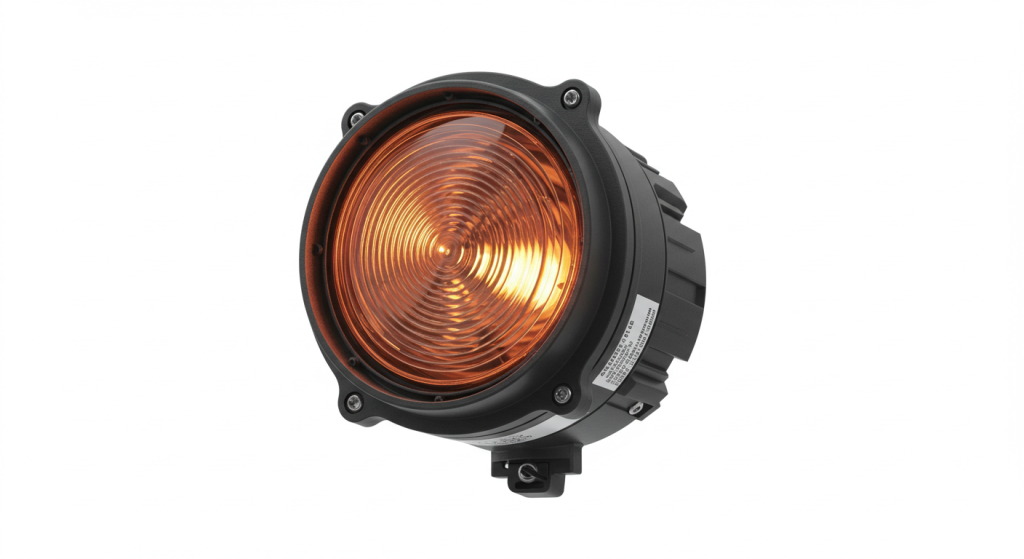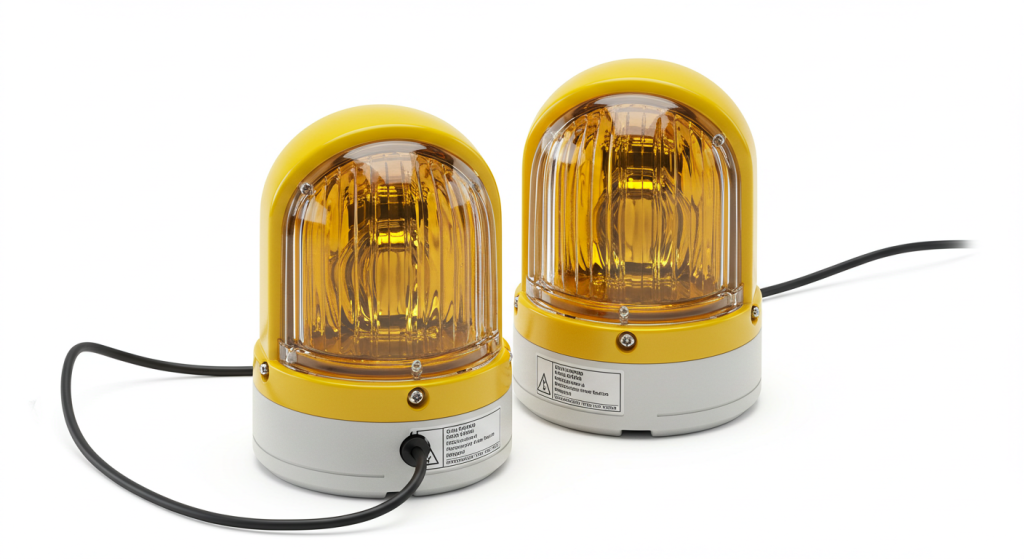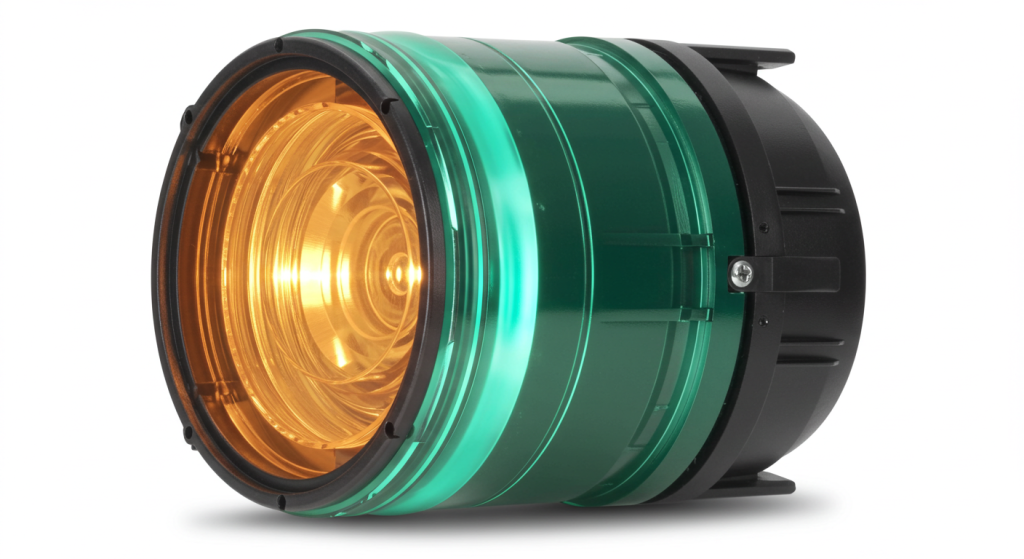In the realm of aviation, safety is paramount. From the intricate mechanics of aircraft to the diligent work of air traffic control, every facet of the industry is geared towards ensuring the safe and efficient movement of people and goods through the skies. One often overlooked, yet incredibly crucial, element in this complex system is obstruction lighting. These lights, perched atop towering structures, serve as silent sentinels, guiding aircraft away from potentially hazardous obstacles. For years, traditional incandescent and strobe lights were the norm. But today, a new era has dawned, powered by the energy-efficient and robust technology of LED obstruction light.

The Dawn of LED Obstruction Lighting: A Brighter, Safer Tomorrow
The transition from traditional lighting to LED obstruction light isn’t merely a technological upgrade; it’s a paradigm shift in how we approach aviation safety and infrastructure maintenance. Let’s delve deeper into why LED technology is becoming the undisputed choice for tower operators, airport authorities, and even telecommunications giants responsible for tall communication structures.
Unmatched Energy Efficiency: The Bottom Line Benefit
One of the most compelling advantages of LED obstruction light is its extraordinary energy efficiency. Compared to legacy lighting systems, LEDs consume significantly less power. This translates directly into reduced operating costs. For tower operators who are often managing hundreds, if not thousands, of these lights across a network, the savings quickly add up. The reduced energy consumption also has a positive environmental impact, aligning with the global push towards sustainability. This means lower utility bills and a smaller carbon footprint – a win-win for both your wallet and the planet.
Extended Lifespan: Fewer Maintenance Headaches
Imagine the logistical challenges involved in replacing a light bulb hundreds of feet in the air. This is a routine reality for tower maintenance crews using traditional lighting systems. LEDs, however, boast an exceptionally long lifespan. Typically, an LED obstruction light can last tens of thousands of hours, far exceeding the lifespan of traditional incandescent or strobe lights. This dramatically reduces maintenance requirements, minimizing downtime, labor costs, and the risk of hazardous climbs. Fewer replacements mean safer work conditions for your teams and more dependable illumination for your infrastructure.

Superior Visibility: A Clear Path Through the Night Sky
Visibility is everything in aviation. An obstruction light needs to be clearly visible to pilots from a safe distance, even under challenging weather conditions. LED obstruction lights offer far superior visibility compared to traditional lighting. The brighter, more focused light output ensures that towers and other structures are easily identifiable from the air, improving pilot situational awareness. LEDs also have the advantage of emitting a consistent, pure color of light, further enhancing visibility and reducing the potential for confusion. This clarity translates into a safer flying environment, minimizing risks related to low visibility or misidentification.
Durability and Reliability: Built to Withstand the Elements
Tower structures are often exposed to harsh and unforgiving environments – extreme temperatures, high winds, heavy rain, and even lightning strikes. LED obstruction lights are built to withstand these conditions. They are typically housed in robust, weatherproof enclosures that can handle the rigors of the outdoor elements. The solid-state nature of LEDs makes them inherently more durable and resistant to shocks and vibrations compared to the delicate glass filaments of traditional bulbs. This reliability translates into fewer failures, consistent performance, and reduced maintenance needs, especially crucial in locations prone to harsh weather conditions.
Reduced Downtime: Keeping Operations Running Smoothly
The downtime associated with traditional lighting maintenance can significantly disrupt operations. A failed obstruction light may require temporary shutdowns or create hazards. The long lifespan and reliability of LED obstruction light drastically minimize downtime. The consistent, dependable performance of LEDs translates to less time lost to maintenance and repairs, allowing infrastructure and air traffic operations to run smoothly without interruption. This is particularly crucial for communication towers and airport installations where a failure could have serious consequences.
The Case for Airport Obstruction Lighting: Enhancing Safety Around Runways
While obstruction lighting is vital for all tall structures, its role in airport environments is particularly critical. Airports are hubs of complex activity, with numerous aircraft taking off and landing at all hours of the day and night. Obstruction lighting on buildings, towers, and other structures around an airport’s perimeter is essential to ensuring aircraft safety during these critical phases of flight. Upgrading to LED obstruction light not only enhances safety, but it also can integrate seamlessly with other airfield lighting systems for a unified approach to safety.
LED Obstruction Light: The Technological Edge
The technology behind LED obstruction lighting is continually evolving, resulting in even more advanced and efficient systems. These advancements are pushing the boundaries of what’s possible, leading to smarter, more responsive, and highly adaptable lighting solutions.
Intelligent Controls: The Smart Way to Manage Obstruction Lighting
Many modern LED obstruction light systems incorporate intelligent controls that offer real-time monitoring and management. These controls allow for remote access to system status, enabling operators to detect and address any potential issues proactively. Some systems can even adjust the light intensity automatically based on ambient light levels, further optimizing energy efficiency and ensuring the most effective visibility. This level of control provides increased operational flexibility, reduced maintenance costs, and ultimately, a more reliable and efficient lighting system. These systems often integrate with other airfield navigation systems for a holistic approach to air safety.

Advanced Optics: Maximizing Light Output and Minimizing Glare
The optical design of LED obstruction lights is far more advanced than that of traditional lights. Engineered lenses focus the light precisely where it is needed, ensuring maximum visibility for pilots without causing excessive glare. This focused beam also reduces light pollution, minimizing impact on the surrounding environment. The specialized optics also ensure that the light output conforms to industry standards and regulations, guaranteeing optimal safety performance.
Integration with Monitoring Systems: A Proactive Approach to Safety
LED obstruction lighting systems can be integrated with advanced monitoring systems. These systems provide real-time alerts for failures or maintenance needs, allowing operators to address issues swiftly and prevent major disruptions. This proactive approach to maintenance is a game-changer, significantly minimizing downtime and maximizing safety. The data collected from these monitoring systems can also be used to optimize the overall performance of the lighting network.
The Role of Taxiway Landing Lights in the Overall Airport Lighting System
While LED obstruction light is essential for marking stationary structures, the lights on the airfield itself also play a vital role in aircraft safety. Taxiway Landing Lights, for example, provide crucial guidance for aircraft movements on the ground. These lights must be clearly visible, reliable, and energy-efficient. LED technology has also revolutionized airfield lighting, offering significant advantages in terms of visibility, lifespan, and energy consumption. Upgrading to LED Taxiway Landing Lights can significantly improve the safety and efficiency of ground operations.
The Economic and Environmental Benefits of LED Obstruction Lighting
Beyond the immediate safety benefits, LED obstruction light also offers significant economic and environmental advantages. These benefits are not just desirable; they are becoming increasingly essential for responsible infrastructure management.
Significant Cost Savings: A Wise Investment for the Long Term
While the initial cost of an LED obstruction light system might be slightly higher than traditional systems, the long-term cost savings are undeniable. The reduced energy consumption, extended lifespan, and minimal maintenance requirements quickly offset the initial investment. Over the life of the system, LED lighting proves to be a far more cost-effective solution. These cost savings also free up budget for other critical infrastructure improvements and upgrades.
Environmentally Friendly: A Greener Approach to Aviation Infrastructure
The reduced energy consumption of LED obstruction light also has a positive environmental impact. Less energy consumption translates into reduced greenhouse gas emissions, contributing to a more sustainable approach to aviation infrastructure. The long lifespan of LEDs also reduces waste from bulb replacements, further minimizing the environmental impact. This environmentally conscious approach resonates well with both airport authorities and the public, supporting a greener and more responsible aviation sector.
Compliance with Regulations: Meeting Industry Standards
LED obstruction lighting systems are designed to meet or exceed stringent industry regulations and standards. This ensures that these lights provide the necessary level of visibility and reliability required for safe air navigation. By utilizing LED technology, operators can be confident that their lighting systems meet or surpass the applicable rules and regulations. This compliance minimizes legal risks and guarantees the safety of both aircraft and personnel. Modern LED lights are designed to comply with regulations from organizations like the FAA, ICAO, and other relevant bodies, ensuring consistent and dependable operation.
Choosing the Right LED Obstruction Lighting System
Selecting the right LED obstruction light system is critical for long-term performance and reliability. Several factors need to be considered when choosing an appropriate lighting system.
Evaluating Light Intensity and Color: Ensuring Optimal Visibility
The correct light intensity and color are crucial for optimal visibility. The system must provide sufficient light output to be clearly visible from a safe distance, but the light must not be so bright that it causes glare or distraction for pilots. The color of the light must also conform to industry standards for obstruction lighting, ensuring consistent and predictable visibility. A thorough site evaluation, taking into account factors such as tower height, location, and local weather conditions, is critical for selecting the correct light intensity and color.
Understanding System Reliability: Ensuring Consistent Performance
Reliability is of utmost importance when it comes to obstruction lighting. The chosen system must be robust and designed to withstand the rigors of the environment. A comprehensive assessment of the system’s components, including the LEDs themselves, the housing, and the control system, is crucial for ensuring long-term, dependable performance. Look for certifications that demonstrate compliance with relevant industry standards for durability and reliability, often tested in harsh conditions to ensure their longevity.
Considering the Mounting Options: Ensuring Compatibility and Stability
The chosen lighting system must be compatible with the existing tower structure and should be easy to install and maintain. Different types of mounting hardware are available to suit various applications and installation requirements. Proper installation is critical for ensuring the lights are positioned correctly and function as intended, guaranteeing optimal visibility for aircraft. You should also consider the accessibility of the lights for future maintenance and repairs when making the mounting options.
Consulting with Experts: Getting the Best Solution
Choosing the correct LED obstruction light solution can be complicated. Consulting with a lighting specialist or an experienced installer is highly recommended. Experts can provide guidance on selecting the most appropriate system for your specific requirements. They will be able to perform site surveys, analyze lighting needs, and provide cost estimates and long-term maintenance plans. They are also up to date with all regulations related to obstruction lighting, ensuring compliance and long-term operation. This ensures not only the safety of operations, but also the long-term return on your investment.
The Future of LED Obstruction Light: Continued Innovation
The technology behind LED obstruction light continues to evolve, promising even more advanced and efficient systems in the future. Ongoing research and development efforts are focused on further enhancing light output, reducing energy consumption, and improving system reliability. We are also seeing the development of more intelligent and adaptable systems that integrate seamlessly with advanced airfield navigation systems and other technologies.
Smart Grid Integration: Enhancing Efficiency and Sustainability
One promising area of development is the integration of LED obstruction lighting systems with smart grids. This integration will allow for more efficient energy management, enabling lighting systems to operate at their most efficient levels while minimizing their impact on the overall grid. Smart grids also provide greater opportunities for remote monitoring and management of lighting systems, allowing for proactive maintenance and reducing downtime. These systems are becoming increasingly important in smart city infrastructure and are crucial for sustainability efforts.
Adaptive Lighting Systems: Responding to Real-Time Conditions
Future LED obstruction light systems may be capable of adapting their output in real time based on environmental conditions, such as fog, rain, or snowfall. These adaptive lighting systems will ensure the best possible visibility under any circumstances, further improving aviation safety. They would work with sensors and computer systems to automatically adjust the lighting output and pattern in response to changes, ensuring the highest possible level of safety for pilots.
Remote Diagnostics and Predictive Maintenance: A Proactive Approach
Future LED obstruction lighting systems will also feature advanced remote diagnostics and predictive maintenance capabilities. These technologies will allow operators to identify potential issues before they become major problems, ensuring that lighting systems remain operational and reliable. This will further reduce downtime and minimize maintenance requirements, adding another layer of safety for air operations. This proactive approach will maximize system uptime and minimize operational disruptions.
The Benefits in Summary: Why Choose LED Obstruction Light
In conclusion, the transition to LED obstruction light is not just a trend; it’s a necessary evolution in aviation safety and infrastructure management. The numerous advantages of LED technology, including its superior energy efficiency, extended lifespan, enhanced visibility, and increased reliability, make it the clear choice for tower operators, airport authorities, and other infrastructure managers. This technology is key to safety around all tall structures, particularly in areas where air traffic is present.
The core benefits of choosing LED obstruction light can be summarized as follows: Use code with caution.
| Benefit | Description |
|---|---|
| Energy Efficiency | Significantly reduced power consumption compared to traditional lighting, resulting in lower operating costs. |
| Long Lifespan | Extended operational life dramatically reduces maintenance frequency and labor costs. |
| Superior Visibility | Brighter, more focused light output ensures clear visibility, enhancing aviation safety. |
| Durability and Reliability | Robust design withstands harsh weather conditions, ensuring dependable performance. |
| Reduced Downtime | Minimized maintenance needs keep systems running smoothly with fewer disruptions. |
| Cost Savings | Long-term financial savings due to reduced energy and maintenance needs. |
| Environmental Friendliness | Lower energy consumption contributes to a more sustainable approach to aviation infrastructure. |
| Compliance | Meets stringent industry regulations, ensuring safe and reliable operation. |
| Smart Features | Many modern systems include remote monitoring and intelligent controls, enhancing overall performance. |
By investing in LED obstruction light, you are investing in a safer, more efficient, and more sustainable future for aviation. The advancements in this technology make it the logical and responsible choice for any application requiring dependable and long-lasting obstruction lighting. The investment will prove its worth through the improved safety and reduced cost of long-term operation.
Ultimately, the move to LED obstruction light is about more than just lighting a tower. It’s about safeguarding human lives and ensuring the continued smooth operation of our complex aviation network. By embracing this technology, we are paving the way for a brighter, safer future in the skies.
The integration of LED technology across all aspects of airfield lighting, from obstruction lights to Taxiway Landing Lights and integration with airfield navigation systems is revolutionizing the industry, creating a safer, more efficient and environmentally responsible approach to aviation infrastructure. By choosing LED obstruction light, you are choosing the future of aviation safety.